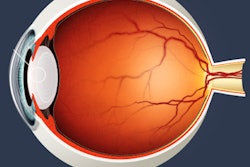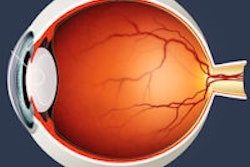A new study of interventional cardiologists and nurses in Malaysia found five times the rate of cataracts in the group compared to controls, suggesting that current radiation protection thresholds may be too high to protect providers from harm.
The study, published online in Catheterization and Cardiovascular Interventions, found that cataract rates vary according to the length of professional exposure, as well as the level of eye protection operators choose to wear.
"Occupational exposures received during interventional cardiology procedures are the highest doses received by health professionals," wrote Olivera Ciraj-Bjelac, from the Vinca Institute of Nuclear Sciences in Belgrade, Serbia, and colleagues from several institutions worldwide. Even under normal working conditions, scatter radiation around the patient may reach high levels, according to the authors (Catheter Cardiovasc Interv, August 2010).
"With respect to ocular exposure, the increasingly larger workload typical of many modern catheterization suites, a lack of training in radiation protection, and unavailability or nonuse of radiation protection for the face and head may result in doses to the eye sufficient to cause cataracts," they found.
Collaborating institutions included the International Atomic Energy Agency (IAEA) in Vienna, Austria; Sarawak General Hospital in Kuching, Malaysia; Complutense University in Madrid; and Columbia University in New York City.
Worse with prolonged exposure
Cataract formation is the "primary ocular complication associated with radiation exposure to the eye," the authors explained, a condition that generally manifests as cortical and posterior subcapsular opacification of the lens, the most radiosensitive eye tissue. Changes resulting from exposure tend to appear first in the posterior subcapsular region of the lens and consist of small dots and vacuoles which, over time, aggregate to form larger opacities, the authors wrote. Thus, cataract severity and latency are both related to dose, they noted.
The research team examined the prevalence of radiation-associated lens opacities among interventional cardiologists and nurses, then correlated the exam results with cumulative radiation exposure estimates calculated from responses to a questionnaire and personal interviews of each subject.
The exams were performed during the 2009 meeting of the National Heart Association of Malaysia in Kuala Lumpur. Researchers examined the eyes of the interventional cardiologists and nurses, as well as of a group of age- and sex- matched unexposed controls, using a comprehensive dilated slit lamp examination, the authors wrote.
The cohort consisted of 67 physicians and nurses working in interventional cardiology, and the control group of 22 age- and sex-matched healthcare professionals who had no reported occupational or medical history of ionizing radiation exposure to the head or neck.
The participants were asked about occupational exposure information including type of work, type of x-ray equipment used, number of years of work in interventional cardiology, number of years on the job, and use of protective screens and personal protective devices, the group wrote.
The investigators also solicited information on lifestyle and medical factors including potential sunlight exposure, steroid use, cigarette smoking, alcohol consumption, medical and ocular history, and familial history of eye disease -- a factor that led to the exclusion of nine participants.
Each participant was evaluated separately by two independent observers; in case of disagreement, a third independent observer was asked to provide the final assessment. Merriam-Focht scores of 2.0 or greater were deemed to correlate with changes in visual acuity, though lower scores have been found to correlate with impaired vision.
Increased risk
The results showed a dose-dependent increased risk of posterior lens opacities for interventional cardiologists and nurses when radiation protection tools were not used.
Lens changes were found in 34 subjects, including 29 interventional cardiologists and five support staff. A strong dose-response relationship was found between exposure and the prevalence of radiation-associated posterior lens changes, the authors wrote.
The prevalence of radiation-associated posterior lens opacities peaked at 52% for interventional cardiologists (29/56, 95% confidence interval [CI]: 35-73); 45% for nurses (5/11, 95% CI: 15-100); and 9% for controls (2/22, 95% CI: 1-33).
From these data, the authors calculated the relative risk of lens opacity at 5.7 (95% CI: 1.5-22) for interventional cardiologists and 5.0 (95% CI: 1.2-21) for nurses. The estimated cumulative ocular doses ranged from 0.01 Gy to 43 Gy, with mean and median values of 3.4 Gy and 1.0 Gy.
"Eighteen percent of individuals with cumulative eye lens dose of less than 1 Gy and 33% of those occupationally exposed to more than 1 Gy presented with posterior lens opacities consistent with ionizing radiation exposure," the researchers wrote. "Of 34 subjects with lenticular changes, 14 (41%) reported irregular or no use of suspended screens and 32 (94%) reported irregular or no use of protective leaded glass eyewear."
The estimated dose for those with positive findings ranged from 0.12 mGy to 7.6 mGy, compared with 0.06 mGy for nurses who had no visible lens changes.
The small cohort size limits the statistical significance of the study. "Nevertheless, the observation of positive findings in 45% of these individuals is cause for concern and strongly indicates a need for further investigation in these workers," they wrote. Among interventional cardiologists, dose-related radiation-associated posterior lens changes were present in 51%.
The findings in the small cohort "suggest that x-ray exposures to the lens of interventional cardiology personnel are sufficient to result in radiation-associated posterior lens opacities after only several years of work if ocular radiation protection devices are not utilized," the group wrote.
Long-term follow-up of the progression of individuals with documented lens changes is needed before definitive conclusions can be made about potential risk for visual disability due to clinical radiation cataracts. But the findings "strongly demonstrate increased risk of cataract for interventional cardiology staff," they wrote.
The use of eye protection is therefore critical for preventing radiation-induced lens injuries, according to the researchers. But awareness of protection is low, a factor that exacerbates the rate and severity of injuries to the eyes.
As a result, "there is an urgent need to implement training programs in interventional cardiology such as the standardized IAEA program, which includes participants from more than 55 countries," they wrote. Knowledge of individual dose levels helps increase awareness about radiation. "Thus, good training, skilled operators, and use of radiation protection devices are essential elements in achieving a safe working environment in interventional cardiology," the researchers concluded.
The group also called for prompt detection of lens injury, and ophthalmic examination as part of routine health surveillance in interventional cardiology.
"Dose levels to the lens of the eye per procedure can be as high as 2 mGy, implying that the potential for lens injury exists, even under current [International Commission on Radiological Protection (ICRP)] threshold guidelines, after only a few years' time," they wrote. The findings are in agreement with other studies that have found harm after relatively low exposures to radiation, they added.
"The findings do not support the currently assumed 5 Gy threshold for 'detectable opacities' from protracted exposures, but rather point to a significantly lower dose-effect threshold," the group concluded.
By Eric Barnes
AuntMinnie.com staff writer
August 5, 2010
Related Reading
Cardiac cath delivers high radiation doses to operators, April 5, 2010
New paper updates guidelines on fluoro radiation injuries, February 18, 2010
IAEA study finds that interventional dose may be too high, August 5, 2009
Exposure to low doses of ionizing radiation linked to increased risk of cataracts, October 3, 2008
Radiation burns 'often' iatrogenic - UN, May 10, 2004
Copyright © 2010 AuntMinnie.com



















